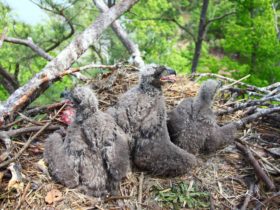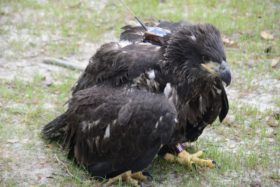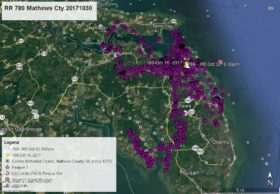Azalea at Lake Smith Jan 6
Camellia at First Landing State Park
January 6, 2012CCB Completes Gulf Oil Spill Work with Eagles and Osprey
January 6, 2012Azalea has moved about during the past three days. She began at First Landing State Park (YELLOW arrow Jan 3 at 1:00am). She flew from there to Lake Smith and stayed overnight in Lake View Park (PINK pointer Jan 4 at 1:00am). From there she flew to Bishopsgate in Little Neck (GREEN pointer Jan 5 at 1:00am). She returned to Lake Smith late yesterday to spend another night (PURPLE pointer Jan 6 at 1:00am). As of this map Azalea is in the Lake Shores neighborhood off Lake Smith – WHITE arrow Jan 6 at 10:00am.






2 Comments
Always interesting to see where these eagles are flying to. Mr. Lukei I was wondering is there any proven difference in endurance between a female and female eagle, in terms of how far they are able to fly in a single flight? Thanks for all that you do I’ve been learning so much reading here 🙂
Response – Hmmmm! I do not recall ever seeing a study that addressed the issue of “flight endurance” of bald eagles. We have seen both Azalea and Camellia make flights of 50 to 100 miles, so we know they can fly long distances in one flight. The question of endurance involves not just distance, but also how long can they remain in flight like when soaring which can last two or three hours at a time.
One cannot help but wonder if these two have ever run into each other when they visit the same areas from time to time. They have both stayed in the area for quite some time. Hope they may decide to locate in the area once they are old enough to mate and have families. What is the longest these backpacks have been known to stay active? I think Az’s has lasted longer than the projected life years.
Response – Azalea has been wearing her satellite transmitter for 2 1/2 years. The average expected life is 3 years, however, some of the eagles CCB has fitted with transmitters are still active after nearly 4 years – check http://www.wildlifetracking.org